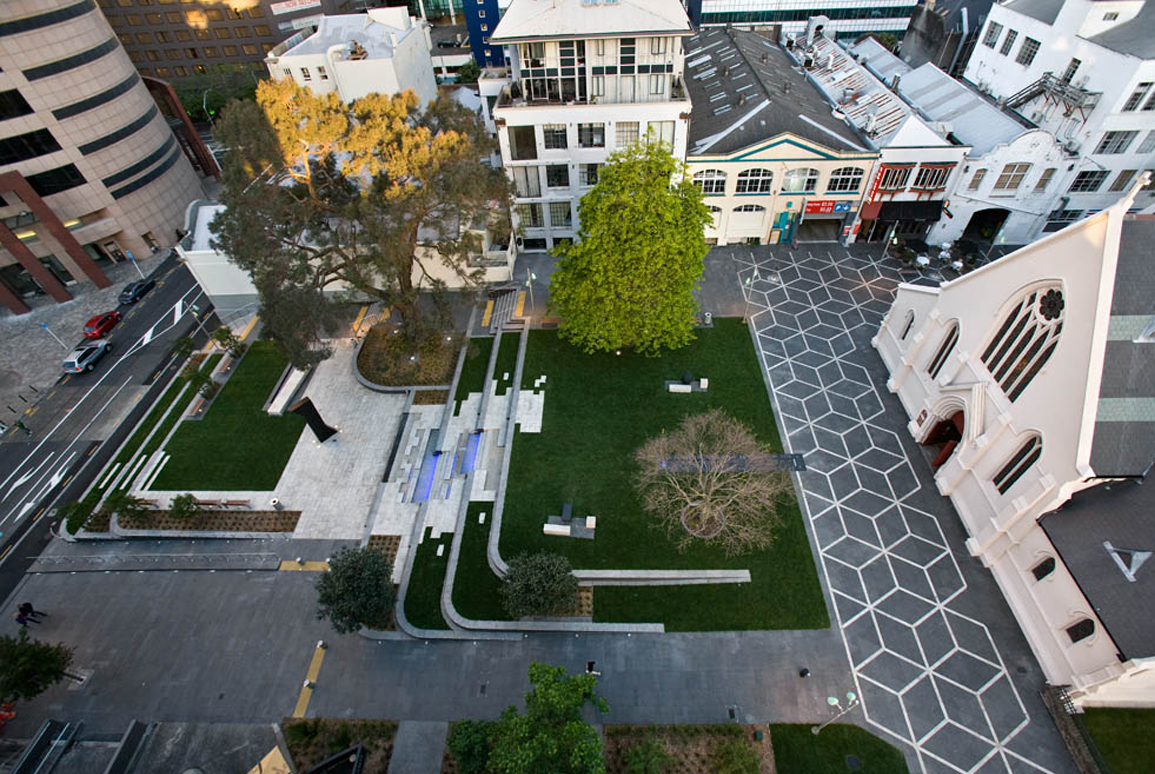Embedding sustainable design practices at a range of scales for projects targeting Green Star ratings.

As the desire for more sustainable buildings and communities grows, and lenders look to fund initiatives which help the transition towards a low-carbon economy, there’s a need to independently assess the merits of individual projects. Green Star, operated by the New Zealand Green Building Council (NZGBC), is recognised as the leading sustainability rating tool In Aotearoa New Zealand.
Green Star Communities and Green Star Buildings ratings are used by major banks including ANZ, Westpac, and BNZ to evaluate development projects seeking sustainable finance, with benefits including lower interest rates available for projects which perform well.
Lower interest rates are not the only financial incentive for developing greener buildings. Recent research by JLL¹ has shown that properties which achieve a Green Star rating have higher rental yields, higher sales prices, and lower vacancy rates when compared to equivalent buildings in the same location. Making sustainable decisions in the initial design phase can pay off in the long run, creating developments which perform better financially and environmentally.
Boffa Miskell recognised the need to consolidate global best-practice guidance on sustainable design and make it accessible and easy for our team to incorporate throughout each stage of the design process. This led to the development of our Carbon-Smart Design Guidelines, a framework that demonstrates how to achieve positive outcomes across the realms of social, cultural, economic, and environmental sustainability.
As a result, Boffa Miskell’s designers are well-positioned to support our clients by leading and contributing to projects targeting Green Star ratings.
· The Carbon Smart Design Guidelines have been developed through analysis of global best practice guidance, including the credits within each Green Star tool.
· The Guidelines ensure that best-practice sustainability considerations are integrated into our business-as-usual approach, limiting any additional work involved in designing to achieve a rating.
· The Guidelines encourage thinking about sustainability at a range of scales, enabling us to bring value to Green Star Communities or Green Star Buildings projects.
How Green Star informs our Carbon Smart Design Guidelines
In developing the Carbon Smart Design Guidelines, the Green Star Communities and Green Star Buildings tools were among the key resources we looked to. These tools, which have been developed by sustainable building experts across Australia and New Zealand, provide a framework for assessing sustainability which is specific to our local context.
We considered the credit criteria for both tools, using relevant credits to help define what best practice for sustainability in Aotearoa New Zealand’s built environment looks like.

Sustainability best-practice is built into our business-as-usual approach
Whilst sustainability and care for the environments and communities we work in has always been an integral part of how we design, the Carbon Smart Design Guidelines provide an evidence-based framework for us to follow for every type of project.
A common barrier for projects considering targeting a Green Star rating is the perceived additional work and cost involved in designing to a ‘higher standard’. The Guidelines, informed in part by Green Star credits, ensure that sustainability best-practice is always front of mind in our design process.
Best practice is considered across a range of scales
Projects of all scales have a part to play in ensuring a lower carbon future. The NZGBC recognises this and offers two Green Star tools to evaluate the sustainability merits of individual projects. Green Star Communities is used to assess masterplanned precincts and neighbourhoods, whilst Green Star Buildings assesses individual buildings at the site scale.
The Carbon Smart Design Guidelines follow a similar approach, developed to guide designers through the full project cycle across a range of scales. They pull together global best practice guidance at the project framework and site context scales, where designers might be considering climate adaptation or community connectivity, right through to the scale of material selection and considering the carbon involved in ongoing landscape maintenance.
This proactive approach makes sustainability second nature and reduces extra work for projects targeting Green Star certification. For clients and property developers, this means a smoother process, fewer surprises, and developments that stand out for their environmental and market performance.
Three of Boffa Miskell’s consultants have been appointed as Technical Advisers to the NZGBC to provide answers to certification questions related to their fields of expertise:
· Ian Boothroyd (Ecology)
· Sam Parsons (Climate Adaptation and Assessment)
· William Hatton (Indigenous Culture)
Additionally, Sean Eustace (Urban Design) is a Green Star Accredited Professional in the Green Star Communities tool and is well equipped to provide advice to projects interested in targeting a Green Star Communities rating.




